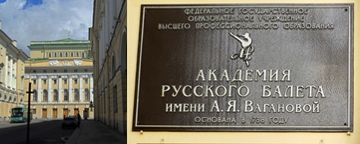Building brides between cultures & generations through the best ballet training
Intensives and Teacher Training
The Open World Dance Foundation Winter Workshops, Summer Intensives and Teacher Training programs provide unique access to the comprehensive and unabridged Vaganova Method Training. We accomplish this in multiple ways. Importantly, we have a network of teachers, among whom, are comprised of the only three direct students of Agrippina Vaganova still teaching today. In addition, our instructors are graduates of the Vaganova Academy, some of whom have taught there as well. They are accomplished dancers and teachers. Read here for more.
Most importantly, the Vaganova method of training is more than a style and ballet technique. It encompasses an appreciation of ballet history, culture and art; character and historical dance; and stage preparation, including make up and acting. Our programs, from our Winter and Summer Intensives to year-round Elite Training, expose students and teachers to the entire scope and breadth of the method and share the best of Russian ballet traditions.
About Vaganova Ballet Academy

” Founded in 1738 by decree of Empress Anna I, of Russia, the Imperial Ballet School became Russia’s first educational establishment to provide professional ballet training. Now known as Vaganova Academy, the school has just marked its 280th Anniversary.
Over the years, the Academy has graduated a galaxy of legendary dancers and choreographers: Anna Pavlova, Vaslav Nijinsky, Mikhail Fokin, George Balanchine, Rudolf Nureyev, Mikhail Baryshnikov, Natalia Makarova, Oleg Vinogradov, Yuri Grigorovich, Farukh Ruzimatov, Altynai Asylmuratova, Konstantin Zaklinsky, Ulyana Lopatkina, Diana Vishneva, Svetlana Zakharova, and Olga Smirnova to name just a few.
The Academy’s method of ballet training was created by one of its most distinguished teachers – Professor Agrippina Y. Vaganova, who taught at the Academy from 1921 until her death in 1951. Since that time, the Academy has continued to develop and advance the syllabus that has created so many exceptional artists.
Each September, a new group of children begin their ballet education at the Academy. The tradition continues. “
– Quoted from the Welcome Page of http://vaganovaacademy.com.
About Agrippina Vaganova
“Agrippina Vaganova (1879-1951) is revered as the visionary who first codified the Russian system of classical ballet training. Her approach has proven to create beautiful, expressive, musical powerful dancers. The training of dancers in this tradition includes ballet technique, variations, character and historical dance, music theory and history, and acting. It includes proper etiquette between teachers and students, allowing the passing on of traditions and knowledge built by centuries of incredible Russian history and art and to share its exquisite elegance and taste.
Vaganova Academy of Russian Ballet, based on impeccable technique and powerful movements, enjoys a well-earned reputation for elite standards. The Academy’s students and graduates include Rudolf Nureyev, Yuri Soloviev, Mikhail Baryshnikov, (Irina Kolpakova,) Natalia Makarova, Uliana Lopatkina and Diana Vishneva. … Vaganova’s story (extends) from her early years as a ballet student in tsarist Russia to her career as a dancer with the Mariinksy (Kirov) Ballet to her work as a pedagogue and choreographer. …(She was a) great woman who changed the face of Russian – and international – ballet forever.”
– Book jacket of “Vaganova Today – The Preservation of Pedagogical Tradition” by Catherine E. Pawlick
Pawlick discusses “the deep significance of the Mariinksky and Vaganova traditions. As a country, the United States itself is barely as old as this venerable technique; as such, it possesses no comparable ancient traditions, especially in the realm of art.” As graduates of Vaganova Academy and former members of the Mariinsky Ballet, OWDF Founders Ekaterina Shchelkanova and Anton Boytsov share their knowledge and offer an unparalleled level of instructors to share the knowledge of Vaganova method training with students, dancers and teachers. Few have experienced such depth of Vaganova training outside the hallowed halls of Vaganova Academy itself.
“When the curtain goes up on the Mariinsky Theatre today, there is no doubt that this is a company that continues to be the epitome of refined, uniform classical ballet technique with deep historical traditions. Those traditions and that classical technique exist in great part thanks to the system founded by Agrippina Vaganova.
Vaganova’s system endures, which speaks to its strength, longevity, and the heavy weight of tradition that it now carries, a tradition that has been supported by the Russian government, by social philanthropists, and by countless pedagogues and dancers who perpetuate it by devoting their life work to the art of ballet. If, as so many pedagogues insist, the core principles of Vaganova technique can continue to be preserved while adapting to the changing times, then Vaganova’s system of ballet training will withstand any future vagaries that may arise in ballet, and will persist for decades to come” (Pawlick).
*Quotes credited to “Vaganova Today – The Preservation of Pedagogical Tradition” by Catherine E. Pawlick
